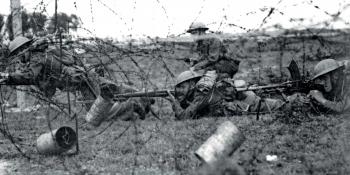DECOY AIRFIELDS
Set in beautiful countryside between Eynsford and Shoreham is the Lullingstone Country Park. Today a favourite place for walkers, few know about its great wartime secret. Robin J Brooks meets a man sworn to ‘keep mum’ until the 1980s
By new year 1940, it was obvious that RAF Fighter Command’s 11 Group, covering an area from Portsmouth to south Norfolk, would bear the brunt of aerial fighting in whatever lay ahead. One of the airfields within the group was Biggin Hill in Kent, a sector station encompassing the area from Hawkinge to Eastbourne and inland to Croydon. Being the controlling station for several fighter airfields, its survival was paramount, and the station was selected to receive what was then the ultimate form of deception – a decoy.
The wartime airfield decoy scheme dated back to at least June 1939. However, its implementation lay dormant for three months, until war was declared. Biggin Hill’s decoy was constructed in a beautiful section of the Darenth Valley in Kent, and sited between the villages of Eynsford and Shoreham at Lullingstone.
In 1939 the now famous ruins of a Roman villa were discovered there, but the village was already well-known for Lullingstone Castle,…




